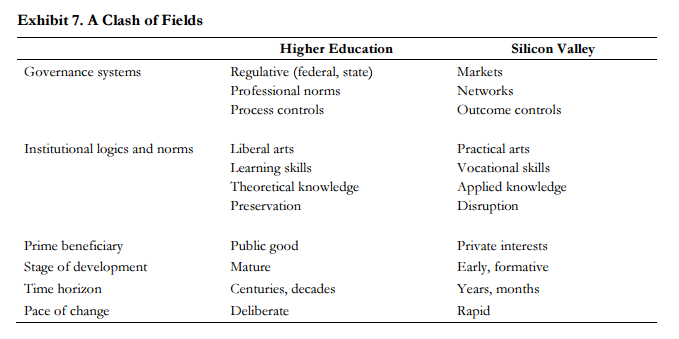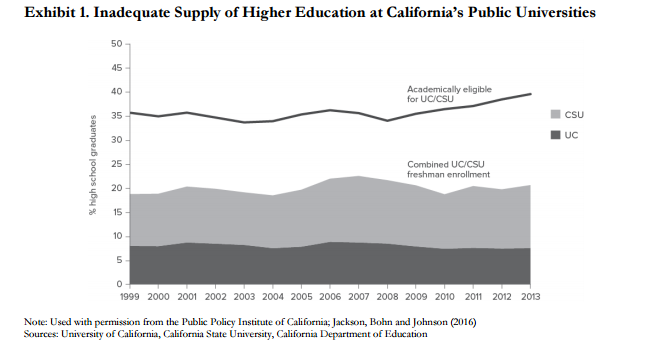Much has been written about the strong relationship between Silicon Valley and Californian universities – Stanford in particular.
The university’s former president John Hennessy was nicknamed the “godfather of Silicon Valley” by entrepreneur Marc Andreessen while journalist Ken Auletta described the institution as “the farm system” for the technology hub in his 2012 New Yorker feature titled “Get Rich U”.
But new research has highlighted the disconnect between universities in the San Francisco Bay Area and Silicon Valley companies, which could “threaten the supply of skills and knowledge needed for economic growth and civic vitality in the region”.
The report, “Why we need a state and regional approach to higher education in Silicon Valley”, written by Stanford University emeritus professors Michael W. Kirst and W. Richard Scott and Manuelito Biag, associate in improvement science at the Carnegie Foundation for the Advancement of Teaching, is based on a longitudinal study of 350 post-secondary institutions in the San Francisco Bay Area from 1970 to the present.
It claims that while both post-secondary institutions and Silicon Valley firms share common interests in knowledge production and professional networks, the two types of institutions are “mismatched in many ways, and ill-suited for each other” (see table below), which leads to “barriers to collaboration and to their independent, yet interdependent, success”.

The “mismatch” is particularly important today because “colleges and universities are no longer as insulated as they have been from wider societal forces”, according to the authors, who claim that California’s higher education policy environment “has led to the stagnation of postsecondary education”.
The study highlights four main challenges facing higher education throughout California and especially in the Bay Area: poor student preparation for college; inadequate supply of higher education to meet changing student demographics (see graph below); increasing tuition rates and students’ increasing inability to pay off their student debt; and projected labour shortages and skills gaps for workers and industry.

While the report notes that universities have adapted in various ways, such as by offering more vocational and online programmes and building bridges with industry, it said that these strategies “have been insufficient to meet the needs” of the area.
“They have not substantially transformed course delivery; bridged the divides among K-12 [school education], higher education, and jobs; or improved transfer among the public systems of higher education,” it states.
“Traditional academic norms and structures were never designed to keep up with a fast-changing and rapidly growing regional economy like the Bay Area, and fiscal restraints have made it more difficult for public institutions to address their multiple missions.”
The report highlights areas of focus for the state and federal governments, noting that the state cuts enrolments during recessions even though demand for post-secondary education increases at such times, and federal student aid could do a better job of supporting older students or those returning to post-secondary education.
However, it adds that Bay Area leaders “cannot wait” for these governments to “act on its behalf” and calls for the development of a regional agenda and entity for education policy in the region.
“Similar umbrella organizations exist in the Bay Area for coordinating regional approaches to the environment, transportation, local government, and other domains – but not for education,” it states.
The full research is included in the forthcoming book Connected but Conflicted: Higher Education and Silicon Valley by Professor Scott, Professor Kirst and colleagues.
Register to continue
Why register?
- Registration is free and only takes a moment
- Once registered, you can read 3 articles a month
- Sign up for our newsletter
Subscribe
Or subscribe for unlimited access to:
- Unlimited access to news, views, insights & reviews
- Digital editions
- Digital access to THE’s university and college rankings analysis
Already registered or a current subscriber?








